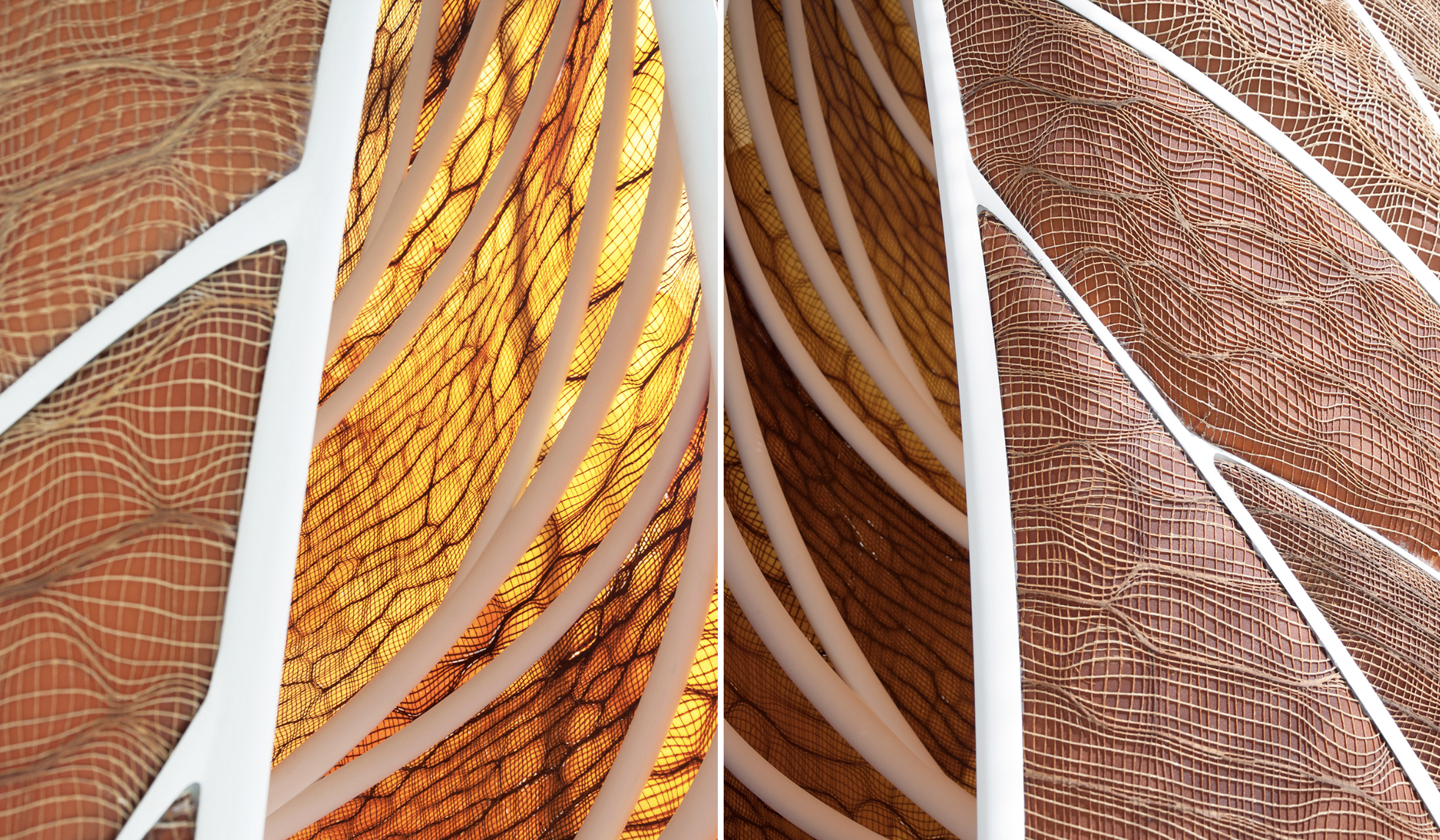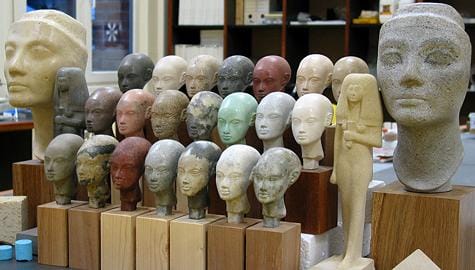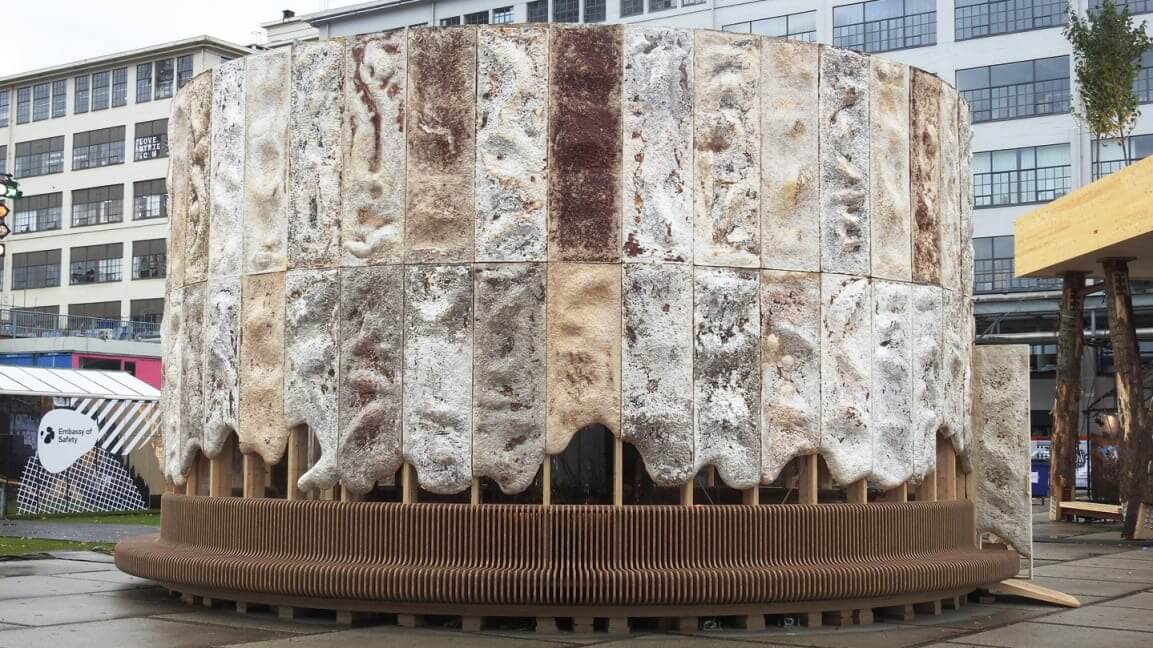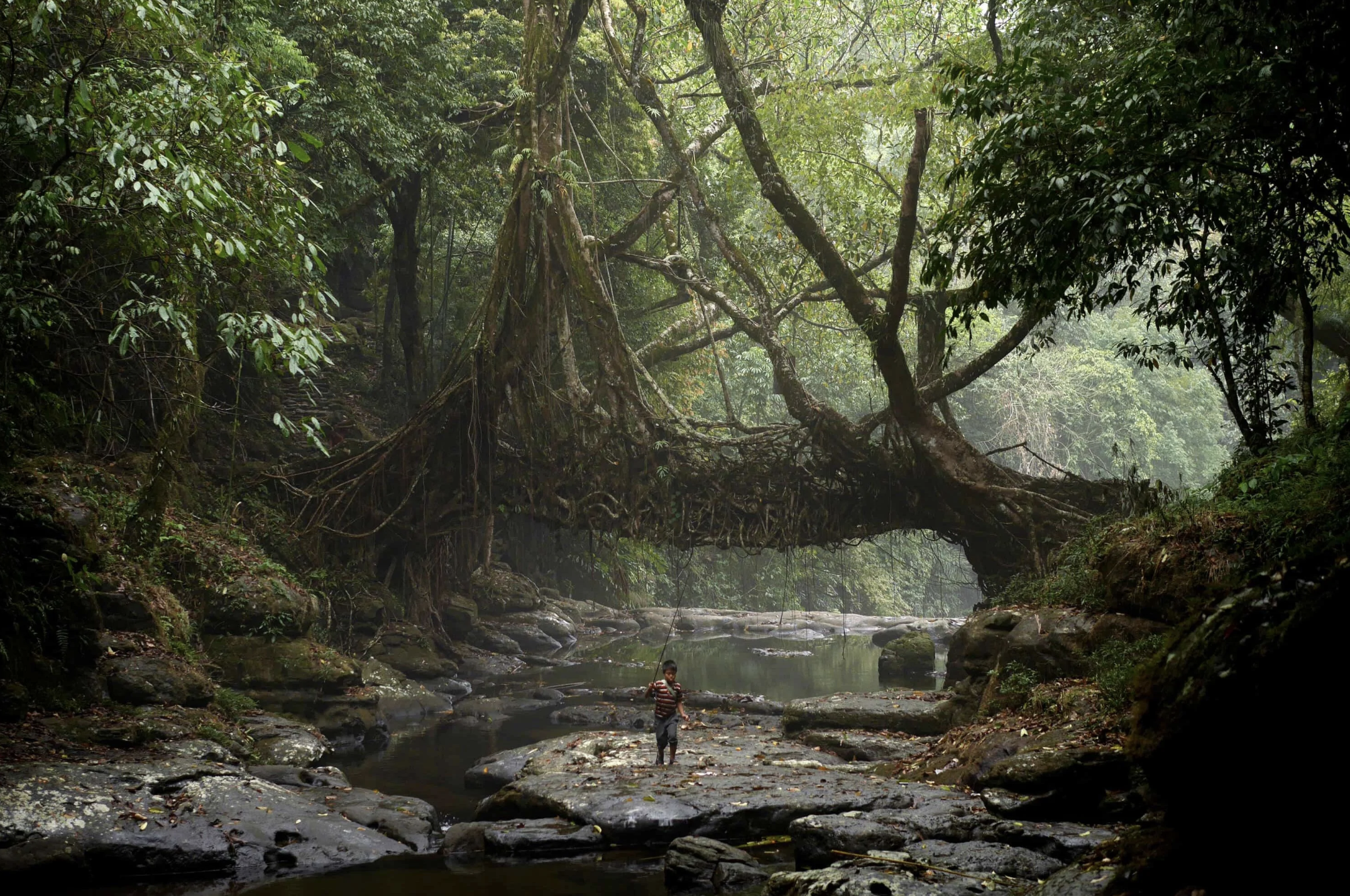LIVING MATERIALS
Architecture 2030 states that 10% of annual Global CO2 emissions come from the production of Building Materials. To lower this amount, we’ll look at innovative biological alternatives. Living Materials can refer to the very old or the very new. Moving chronologically, we’ll learn about how mycelium can be grown and used for insulation and bricks, while remaining fire-resistant, chemical free, inexpensive and easily replenishable. We’ll look at infrastructure that is grown rather than built, like the Khasi people’s living root bridges, which stretch Banyan trees across rivers to form bridges that grow stronger over time. We’ll learn about cement alternatives, from adding fly-ash to reduce embodied carbon, to more experimental materials like Hempcrete, Bioconcrete, and geopolymers. It’s been theorized that the Pyramids may have been built with geopolymers, an alchemical process solidifying a liquid mixture of limestone, citric acid, and bird guano into stone. We’ll speculate if these processes, of growing fig-trees, and casting cement alternatives, could help create a built environment in Miami that is grown, rather than constructed. A built environment with a lifespan, designed to decay.
![Strangler Fig at Matheson Hammock]()


Subthemes
-
Mycelium
-
Strangler Figs
-
Cement alternatives
-
Geopolymers
- Bioluminescence
Examples:
-
Terreform ONE
-
Scape Studio
-
Meghalaya living root bridges
-
Neri Oxman
- Joseph Davidovits / Geopolymer Institute



